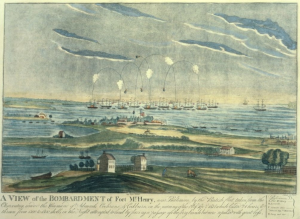




By Rex Hammock, CEO
For 23 years, Hammock’s clients have included marketers at large organizations who sell products or services to decision-makers at small businesses. From our vantage point, we’ve seen how easy it is for such marketers to fall into the trap of thinking their customers run something that’s like a big business, just smaller. In reality, the people who make buying decisions for small businesses live on another planet in a galaxy far, far away from what a big business is like.


For centuries, series of great thinkers have created their own versions of this truth:
We’ll hear “The Star-Spangled Banner” played a number of times over the next few days, and no doubt, we’ll think of fireworks when we hear “the rockets’ red glare/the bombs bursting in air.”
But, as we explain in the July/August issue of American Spirit, which Hammock publishes with the Daughters of the American Revolution , the rockets that Francis Scott Key immortalized weren’t playthings. They were a British system of military rocketry that largely failed to carry out its mission against Fort McHenry, the fort that defended Baltimore Harbor during the War of 1812.
, the rockets that Francis Scott Key immortalized weren’t playthings. They were a British system of military rocketry that largely failed to carry out its mission against Fort McHenry, the fort that defended Baltimore Harbor during the War of 1812.
Designed by the English inventor Sir William Congreve and modeled on rockets used against the British in India by Indian troops, the rockets that flew over Fort McHenry weighed about 32 pounds and had two major deficiencies—they were unreliable, inaccurate and also tended to explode prematurely.
The rockets fired on September 13, 1814, were launched from the British ship Erebus, and ultimately did little physical damage, though the screaming, wildly gyrating rockets terrified American defenders.
Congreve’s rockets consisted of an iron tube packed with propellant and a conical warhead, with three interchangeable payloads including incendiary devices, explosives and case shot—anti-personnel devices that exploded and sprayed iron balls in a lethal cloud. They ranged in size from 3 to about 32 pounds, and could be fired from ships as well as by troops on the ground.